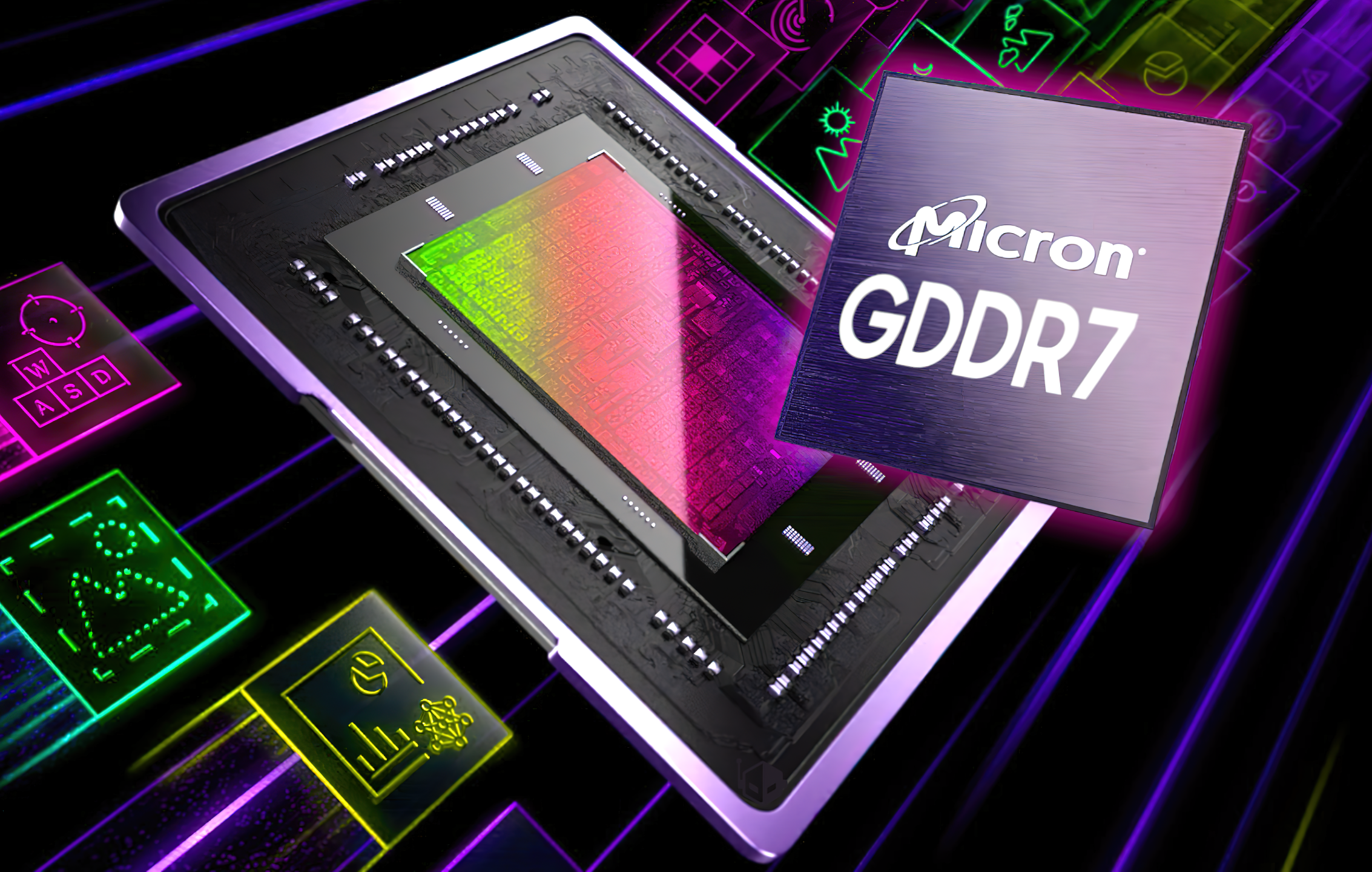Micron has officially unveiled its next-generation GDDR7 graphics memory, promising a remarkable 30% performance improvement over its predecessor, GDDR6.
This new standard in graphics memory aims to enhance gaming experiences, particularly in areas such as ray tracing and rasterization, as highlighted by Harukaze5719 on Twitter.
The anticipated performance gains are substantial, with Micron projecting a 30% increase in frames per second (FPS) across a wide range of games.
Follow us on Twitter here
Background: The Evolution of Graphics Memory
Graphics memory, also known as video memory (VRAM), plays a critical role in rendering images, videos, and 3D graphics.

Over the years, the demand for higher resolution, faster frame rates, and more complex visual effects has driven the development of more advanced graphics memory technologies.
GDDR6, introduced in 2018, has been the standard for high-performance gaming and professional graphics cards.
It offered significant improvements over its predecessor, GDDR5, in terms of bandwidth and power efficiency.
However, as games and applications continue to push the boundaries of graphical fidelity, the need for even faster and more efficient memory solutions has become evident.
This is where GDDR7 comes into play. Micron’s latest innovation represents a significant leap forward, promising to meet the ever-increasing demands of modern graphics processing.
Read More: Why Silicon Wafers Are Round and Chips are Square? – techovedas
What is GDDR7 and Why is it Important?
GDDR7 (Graphics Double Data Rate 7) is the next evolution in graphics memory technology.

It is designed to deliver higher bandwidth, better power efficiency, and faster response times compared to GDDR6. These improvements are crucial for several reasons:
- Enhanced Gaming Experience: As games become more graphically demanding, the need for faster and more efficient memory becomes paramount. GDDR7 aims to provide a smoother gaming experience with higher frame rates and better visual quality.
- Support for Advanced Technologies: With the rise of ray tracing and AI-driven graphics enhancements, having faster memory is essential. GDDR7 is poised to support these advanced technologies, enabling more realistic lighting, shadows, and reflections in games.
- Power Efficiency: Improved power efficiency means less heat generation and lower energy consumption, which is important for both desktop and mobile gaming platforms.
- Future-Proofing: As new gaming consoles and graphics cards are developed, GDDR7 will help future-proof these devices, ensuring they can handle upcoming games and applications without bottlenecks.
Unprecedented Performance Gains
The significant performance improvements of GDDR7 are primarily attributed to Micron’s forthcoming 32Gb/s GDDR7 modules. 
This marks a substantial upgrade from the current 20Gb/s GDDR6 (non-X) modules. These are among the fastest available in the market. Specific benchmarks were not disclosed to substantiate the 30% performance claim. However, the enhancements in memory technology are noteworthy.
The new GDDR7 modules offer a 60% increase in bandwidth. They also provide a 50% boost in power efficiency compared to GDDR6. Additionally, response times have improved by 20%. This is particularly beneficial for demanding workloads like machine learning and AI image generation.
Technical Specifications and Bandwidth
The GDDR7 modules are rated at an impressive 32Gb/s, nearly 10Gb/s higher than the fastest GDDR6X modules to date. Micron’s test configuration, featuring 12 GDDR7 integrated circuits (ICs) connected to a 384-bit wide interface, projects a bandwidth exceeding 1.5TB/s.
To put this into perspective, the RTX 4090, utilizing 21Gbps GDDR6X modules with the same memory configuration, offers 1.008 TB/s of memory bandwidth. This highlights the substantial leap in performance and efficiency that GDDR7 brings to the table.
Future GPU Integration and Market Impact
GPU manufacturers like Nvidia are expected to integrate GDDR7 into their future graphics cards.
This integration could influence the test setups used by Micron to achieve the 30% performance improvement. Nvidia is rumored to be the first to release graphics cards with GDDR7 memory, setting a new industry standard.
However, GPU manufacturers may reduce the bus width of future cards. This reduction could limit the full performance enhancement of GDDR7. The RTX 5090 might feature GDDR7 with a 384-bit bus interface like the RTX 4090. But it is unlikely that the entire RTX 50 series will have this memory interface.
Similar strategies are expected from AMD and Intel. AMD is likely to continue using GDDR6 modules for their next-generation GPUs.
They might transition to GDDR7 with the RX 9000 series. Intel’s plans for their next-generation GPUs remain uncertain.
They might use either GDDR6 or GDDR7 for their upcoming Battlemage series. Alternatively, they could wait until their third-generation Celestial GPUs to adopt GDDR7.
Read More: 25 Essential VLSI Topics for Freshers to Secure Jobs in the Industry – techovedas
The Essence of the Innovation
The essence of this innovation lies in the controlled epitaxial growth of 1D metallic phases within the crystal structure of 2D semiconductors. Unlike traditional transistor designs that rely on complex architectures prone to parasitic capacitance, 1D MTB transistors offer a simplified yet highly effective solution.
By harnessing MTBs, researchers achieve unprecedented control over electron flow at extremely small scales, far surpassing the capabilities of conventional lithography.
The Future of Semiconductor Technology
As semiconductor technology continues to evolve, interdisciplinary collaborations and ongoing research will be crucial in unlocking the full potential of 1D MTB transistors. Director Jo Moon-Ho emphasizes the transformative impact of this research, stating, “The epitaxial growth of 1D metallic phases opens new avenues for ultra-miniaturized semiconductor processes, paving the way for next-generation electronic devices.”
Read More: $18 billion USD: South Korea Unveils Semiconductor Ecosystem Support Package – techovedas
Conclusion
In conclusion, the development of GDDR7 graphics memory represents a significant advancement in semiconductor technology, promising substantial performance improvements for gaming and other high-demand applications. With a 60% increase in bandwidth, a 50% boost in power efficiency, and improved response times, GDDR7 sets a new standard for graphics memory. This innovation underscores the ongoing evolution of semiconductor technology and its critical role in driving advancements in digital technology and global innovation landscapes.








